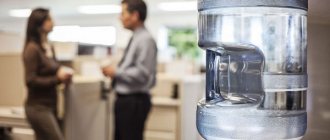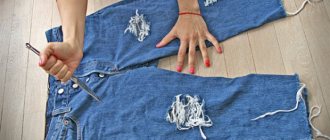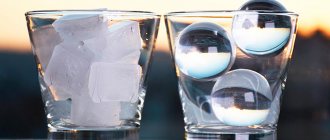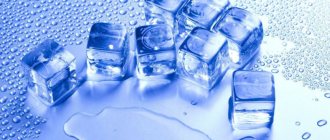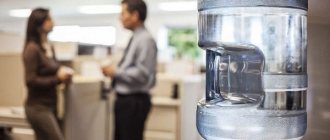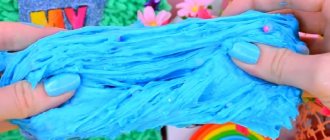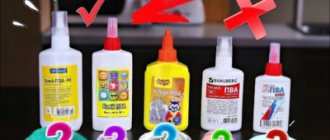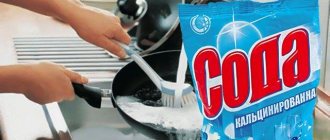Due to hard water, scale forms inside washing machines, and they quickly fail. A high concentration of salts in the liquid causes harm not only to household appliances, but also to people. Hair becomes thinner, skin ages faster, and kidney, vascular and heart diseases may occur. You can soften hard water at home using various means.
What kind of water is called hard?
“Hard” is water that contains calcium and magnesium salts in large quantities. In addition to salts, it contains a high content of heavy metals and other substances. Some chemicals decompose during the boiling process, while others retain their original formula.
Why do you need to soften water? The fact is that hard water causes household inconveniences such as the formation of strong scale and limescale, which significantly reduces the service life of the washing machine and electric kettle. In addition, such water reduces the effectiveness of foaming laundry and dishwashing detergents.
Substances contained in hard water worsen the condition of the skin and hair. If you drink such water for a long time, this leads to various disorders in the functioning of the kidneys and genitourinary system.
Why soften water
For different regions, hard water is a common feature. Many people resort to the need to soften water. The plaque that forms on the bottom of the kettle indicates a problem with water hardness.
This is often discovered when using water from an artesian well, because the level of water hardness is mainly determined by the content of calcium and magnesium in it. These mineral compounds create carbonate hardness in different waters.
- It is possible to soften a liquid with temporary hardness in 1 hour by resorting to the boiling procedure. Carbonate from the walls will sink to the bottom of the dish in the form of a whitish sediment.
- However, if water with a temporary liquid can be softened by boiling, then this method does not work for permanent liquid formed by sulfate and calcium salts. These salts will not be able to dissolve.
- The high hardness of drinking water gives it a bitter taste, and its consumption can cause damage to health. It can cause disruptions in the functioning of the stomach and intestines.
- In domestic conditions, such water will lead to damage to washing and dishwashing machines, boilers, and kettles. A negative effect on plumbing pipes has also been noticed; they become clogged and quickly become unusable under the influence of excessively hard water.
Noting all of the above, it is worth softening the level of water hardness, namely, reducing the calcium-magnesium compounds in it.
How to test water hardness at home
There are a number of ways in which you can determine water hardness at home. You can do the following:
- Use the "express test". This is an indicator that determines water hardness, which can be purchased at medical equipment stores or pet stores.
- Measure hardness using a TDS meter (conductivity meter). This electronic device is popularly called a “salt meter”, and the principle of its operation is that it measures the electrical conductivity of water. This indicator is directly related to the amount of salts contained; the higher it is, the harder the water.
It is possible to determine that water is hard without any special means. Determining its quality is possible using traditional methods:
- Lather your hands generously or dilute laundry detergent in a basin. The harder the water, the less foam the detergent produces.
- Pay attention to the condition of the kettle. Elements contained in hard water, during the heating and boiling process, settle on the walls of the cookware, forming a hard yellowish coating.
- Brew some tea. The harder the water, the longer it will take to brew an invigorating drink. If the water is of normal quality, this will take no more than a minute, and with increased hardness, brewing will take at least 7 minutes.
You can soften water in different ways; there are special means for this, but you can also use traditional methods.
Features of selection for a private home
If the water in a suburban area has increased hardness, it is definitely not worth using in its original form .
If the degree of mechanical contamination is not very high, the capabilities of a conventional coarse filter will be sufficient. After it, you should install a column with ion exchange resin or a filter using a reverse osmosis system.
Important. It will not be possible to obtain a large volume of pure product at once; you need to wait until the purification process is completed.
If desired, you can install a storage tank in a private house to store a supply of purified water for the future.
How to soften well water
The water in the well is not always of good quality; often the content of salt impurities and metals exceeds the norm. How to make such water suitable for household needs, bathing and cooking? Apply one of these methods:
- Boiling. When exposed to high temperatures for 40–60 minutes, most substances decompose, and the remaining elements settle to the bottom of the container as a result of subsequent settling. This water is suitable for drinking, cooking and bathing.
- Advocacy. This method is used in cases where it is necessary to water indoor flowers and crops in the garden. As a rule, owners of private houses take water from a well for this purpose. A large container is filled with water, which must stand for at least 24 hours.
- Freezing. It is better to partially freeze water by filling it in a plastic bottle and placing it in the freezer. When an ice crust forms near the walls of the vessel, the unfrozen water is poured out and the ice is left to thaw. Melt water is suitable for drinking and watering plants.
- Mixing. You can reduce hardness by mixing water from a well with soft, purchased or melt water.
- Silicon. Minerals are washed in running water and placed in a container. Then water is poured into the vessel and covered with a cloth. You need to stand for at least 2-3 days.
Cleaning water can be softened with soda ash or ammonia. This will help neutralize salts and increase the amount of suds from detergents.
Ways to soften water
There are simple ways to soften water at home with your own hands. To select a method, you need to decide for what purpose the water will be prepared - for bathing children, washing, cooking, for an aquarium, or for other household needs.
To soften water in large volumes, it is recommended to install special devices - water softening filters with an insertion into the water supply system or functioning independently.
It is possible to reduce the level of water hardness at home in the following ways:
- Standing is a simple method to perform. The water tank is placed aside for 1-2 days, away from the sun's rays. Settled water is often used for watering indoor and garden plants. Replenishment of water for these needs is carried out from wells or wells.
- Boiling is the simplest method of purifying water from hard compounds without the use of chemicals and organics. Heating to high temperatures affects the decomposition of salts and leads to their settling on the bottom of the dish. In this simple method, the beneficial properties of drinking water are lost, energy consumption increases, and scale will have to be removed.
- Freezing - this method is based on partial freezing of a hard liquid. The water is poured into a container of the required dimensions and installed in the cooling chamber. When an ice ball forms on the surface of the tank, the remaining water is poured out. The resulting ice, when thawed, will become suitable for drinking. Useful qualities will not be lost, but bad impurities will leave.
How to soften water at home using reagents
To make water soft and improve its quality, various substances are used, for example:
- baking soda (in the proportion of 2 teaspoons per 10 liters of water for technical needs and 1 teaspoon per 3 liters of water for cooking);
- table vinegar, acid or lemon juice when softening water for washing dishes or hair (1 tablespoon per 2 liters of water);
- caustic soda or lime for “technical” water (1 tablespoon per 10 liters);
- special powders or tablets.
It must be remembered that when using chemicals, it is important to strictly adhere to the indicated dosage.
Ion exchange filter
The device consists of 2 tanks. One of them is filled with ion exchange resin, and the second is filled with saline solution. Running water first enters the reservoir with the resin, where it is purified from hardness salts and other substances. Then, under pressure, the liquid enters another container, where it is saturated with sodium ions. As a result, the water becomes much softer.
Water softeners
To soften tap water and remove harmful impurities, you can use a number of special products. These include:
- Filter jugs. As a rule, the container holds approximately 3 liters of water; purification occurs through a filter cartridge that retains salts and various impurities.
- Reverse osmosis. Such a filter system costs a lot of money, but is the most acceptable option. The device is connected directly to the pipes, and filtration occurs using special concentrated solutions. Water purified in this way is intended for bathing and household needs, but it is not suitable for drinking, since the active substances involved in the purification process “kill” not only harmful, but also beneficial components.
- Ion exchange water softeners. With the help of these devices, you can not only purify water from impurities, but also enrich its composition with useful minerals. This water is suitable for drinking and bathing.
For domestic needs
To soften liquid for household and household needs use:
- Soda ash - add 2 tsp per 10 liters. and stir thoroughly. The liquid softened in this way is used for washing. This water cannot be used for drinking.
- Softening salts – for dishwashers. The product is produced in the form of tablets, which are added directly to the car. Its use can significantly extend the service life of equipment.
- Acetic or citric acid - used for hair care and against scale on the kettle. For 2 liters of liquid you need to take 1 tbsp. l. acetic acid or 1 tsp. lemon ###https://build-experts.ru/wp-content/uploads/2019/04/4-131.jpg###
When using these products, it is necessary to follow the exact dosage and storage rules.
For domestic needs
For fish to thrive in an aquarium, they require soft water.
You can reduce its hardness in several ways:
- Boiling is the simplest method of improving the life of fish in an aquarium. After heat treatment, the liquid must be cooled, settled and carefully poured into the aquarium, without lifting the sediment from the bottom.
- Using distillate - this soft water can be added to very hard water. The distillate contains a reduced amount of trace elements, so the procedure must be carried out with caution.
- Freezing is a softening method that is the same as when preparing water for cooking. Also in rural areas, collected precipitation and melted snow can be used. In urban environments this should not be done.
- Reverse osmosis - using a filter is a convenient, but also quite expensive method. Its use is justified for large aquariums.
Using special devices
If for some reason you do not want to use the methods listed above, use special filters.
Magnetic water softener
Magnetic balls are used to soften water for washing machines. This is a kind of filter that neutralizes molecules of salts and metals, thereby softening the water. Using this method of water softening will preserve the household appliance, reduce the amount of limescale deposits on the internal parts of the unit, and increase its service life.
This is an effective means for softening water; the principle of its operation is to change the composition of the liquid due to the influence of magnetic fields. In addition, this softener eliminates harmful impurities contained in water.
The filter is a cylinder equipped with permanent magnets, due to which salts and metals lose the ability to “stick” to the heating elements of various devices, and existing deposits are loosened and easily cleaned off.
For water cleaning to be effective, the pressure should not be stronger than 4 m/s. Most often, magnetic softeners are installed in boiler rooms.
Freezing
Freezing and further defrosting is one of the most effective, simple and safe ways to soften and purify water. This is explained simply: some harmful compounds freeze later, while others freeze earlier than water.
Advice! The best melt water is spring or well water, but tap water will have to be settled or filtered before freezing.
Softening hard water by freezing:
- Pour water into a glass jar or food-grade plastic container and place it in the freezer.
- After half an hour, remove the ice that formed first (it contains harmful compounds).
- When 80-90% of the water becomes ice, drain the remaining liquid (it contains the main bouquet of salts and harmful impurities).
- Thaw the ice at room temperature, covering with gauze or a loose lid. It is also permissible to defrost the ice in the refrigerator - for example, by leaving it overnight.
How to soften water for watering indoor plants
Salts and metals contained in hard will are harmful to plants. How to soften water for watering flowers?
- You can use settled and melt water, and also use liquid purified with silicon.
- The water is also softened with peat. You will need to prepare a solution in the proportion of 100 grams of peat per 10 liters of water, stir thoroughly and water the plants.
- In addition, to prepare a solution for irrigation, add wood ash (30 g per 10 liters of water). The ingredient is dissolved and allowed to brew for an hour, and then the plants are watered.
Rating of models and manufacturers of liquid softening systems
Growing public awareness of the importance of the quality of water used is leading to an increase in demand for purification systems for city apartments and country houses.
Analysis of consumer impressions allows us to compile a rating of the most popular models.
Aquaphor Crystal N
The filter complex for versatile purification of water flow is intended for use in apartments and country houses .
It allows you to delete:
- hardness salts;
- petroleum products;
- pesticides;
- heavy metals;
- chlorine-containing compounds.
The device includes three flasks with cartridges; it allows 6000 liters of water with an average concentration of hardness salts (5 mEq/liter) to return to normal. Operates at a speed of 2 liters per minute.
If the filter is used for very hard well water, the softening cartridge will require regeneration ahead of schedule after 2 or 4 weeks, and then may stop functioning.
Attention. If the recommendations are followed, the softener must be restored four times, after which the cartridge should be replaced with a new one.
The full price of a filter in Moscow is close to 3,000 rubles; one cartridge costs much less, about 700 rubles, which makes replacement easy on the budget.
Geyser Standard
A three-block cartridge filter is designed to work with running water.
Removes:
- rust;
- sand;
- heavy metals;
- organic substances.
A cartridge with food grade ion exchange resin successfully absorbs hardness salts from water with medium mineralization.
The complex operates at a speed of 3 l/min. If the recommendations for use are followed, cartridge replacement is required only once a year. The price of the filter is slightly more than 2 thousand rubles.
Aquaphor OSMO 50 version 5
The filter unit consists of several blocks on the console and a storage tank.
The complex consists of:
- cartridge for mechanical separation of impurities;
- absorber;
- softener;
- reverse osmosis system, which provides ultra-fine purification.
The device deletes:
- coarse impurities;
- hardness salts;
- all hazardous substances.
Working speed 7.8 liters for 1 hour.
Mechanical filtration cartridges require rinsing after 3 months, deep cleaning modules need to be changed after six months of intensive use, and a reverse osmosis cartridge can last 1.5 or even 2 years without replacement.
The price for a filter complex with a storage tank exceeds 7,000 rubles.
Softener Fibos
According to reviews from many users, this single-module filter demonstrates an effective softening effect . The device operates according to a chemical operating principle and provides flow cleaning at a speed approaching 17 l/min.
Within an hour, this model can clean up to 1000 liters. More powerful modifications with a capacity of up to 3000 l/min are available for sale.
The compact metal flask is easy to install and has a valve at the bottom of the body to remove accumulated impurities. Provided regular maintenance and washing out the space for dirt, the filter is guaranteed to last a long time.
The price of models with average performance is 6,000 rubles, with increased power – 9,000 rubles.
Barrier Expert Hard
A complex of three modules mounted on a console cleans the flow from mechanical particles up to 5 microns in size, as well as hardness salts and other harmful components.
The device compares favorably with analogues in the ease of replacing the cartridge and the ability to avoid too much softening, if necessary, by passing the flow around the filler in the cartridge.
The unit can be installed in any convenient place, for example under the sink. Installation is simple, the operation is accessible to home craftsmen. The resource of the filter modules is 10,000 l, the speed is 2 l/min. The price of the complex is approaching 4,000 rubles.
How to soften water for washing hair at home
To safely wash your hair, use boiled, melted water and softened with vinegar or lemon water. In addition, you can use the following recipes to make “soft” water:
- prepare a softening decoction with flax seeds (add 2 tablespoons of seeds to 1 liter of water and boil for 10 minutes, then leave for 40–50 minutes);
- make a herbal decoction with nettle or chamomile (2-3 tablespoons per 1 liter of water), boil for 15-20 minutes, then strain.
Plant-based decoctions not only soften water, but also reduce hair fragility.
Hardness classification
Hardness is a characteristic of water that depends on the content of calcium (Ca) salts dissolved in it and, to a lesser extent, silicon (Si, Latin Silicium), magnesium (Mg).
It could be:
- Non-carbonate
- General
- Carbonate
Bicarbonate is temporary. Easily removed by boiling. Determined by the presence of calcium bicarbonates (Calcium), magnesium (Magnesium) in the liquid. Chemical formula: Ca(HCO3)2; Mg(HCO3)2. Scale forms in hot water pipes, in kettles, on the heating elements of water heaters and boilers.
This is a non-carbonate product. It cannot be removed by boiling. This is due to the presence of salts, which differ in their properties from carbonate salts. These are mainly chlorides (CaCl2, MgCl2), sulfates (CaSO4, MgSO4).
The total stiffness is the sum of the first and second stiffness. The sum of all magnesium and calcium ions and compounds present in the liquid. Since 2014, updated standards have been in force, in which this parameter is measured in degrees of hardness - °F = 1 mEq per liter. In terms of overall hardness, water:
- Medium hardness – 2-10
- Moderate – up to 2
- Hard – over 10°F
In Europe the standard concentration is 2.5; in the Russian Federation – 7.
In well water, the “hard” chemical compounds come from soluble rocks, which consist of dolomite, lime and gypsum. If the region is rich in these minerals, they will definitely be present in the water. You need a water softener.
How to soften baby's bath water
Hard water can lead to irritation on your baby's delicate skin. To prevent this from happening, you can use bathing water:
- boil for 15–20 minutes;
- soften with a decoction of chamomile or string (2 tablespoons of chopped herbs per 1 liter of water);
- eliminate hardness using potato starch (200–300 g) or baking soda (a tablespoon per liter of water);
- add a decoction of flax seeds to the washing water (4–5 teaspoons per liter of water);
- dilute sea or table salt in a bath (10 g per 1 liter of water).
The listed products will help reduce the hardness of tap water, neutralize metals and harmful impurities.
What is drinking water softening
This is the process of purifying drinking or household liquids from salts by reducing their concentration to acceptable values. In other words, this is a decrease in the degree of rigidity, which can be:
temporary - with an increased content of magnesium and calcium sediments (bicarbonates);
constant - with other impurities that do not precipitate into a solid state during boiling, that is, with chlorides, sulfates, nitrates.
Softened water, what is it? In essence, this is a liquid obtained as a result of normalizing the totality of the physical and chemical properties of the medium used, bringing it to recommended and safe for use indicators. Reduces to processing during which unwanted ions and other harmful substances, including nitrogenous and sulfuric acid compounds or pesticides, are removed.
Best Cabinet Type Water Softeners
Cabinet-type equipment is a compact monolithic structure with manual, semi-automatic or automatic control. A thin ion exchange resin is used for filtration, so the sorbent consumption is half that of other systems. ViborExpert carefully analyzed the characteristics of 8 candidates. After comparing them, it was found that 3 products are the most effective.
Atoll S-28S EcoLife
The water softener is suitable for cottages, apartments, private houses, and summer cottages. Ion exchange filtration is used to remove iron and manganese. The model's performance (33.3 l/min) is enough for a family of 4 people. Thanks to its compact dimensions (35x110x51.2 cm), the device easily fits into a small bathtub or other small space. Thanks to its interesting design, Atoll S-28S EcoLife fits harmoniously into any interior.
All important system components are hidden under a durable fiberglass housing. It does not rust or crack due to water hammer. It should be noted that the materials from which the valve and body are made meet NSF quality standards. This means that they are safe for humans and the environment and are suitable for direct contact with food.
The microprocessor control valve autonomously initiates the regeneration of the ion exchange resin depending on the flow rate and the degree of contamination of the liquid. The regeneration process takes only 15 minutes using a minimum amount of water and salt (up to 80 g/l). An LCD display with control buttons located under a translucent cover makes it easy to monitor current tasks.
Advantages:
- Intuitive configuration, management;
- Brine tank overfill protection system.
- Non-volatile memory;
- Low noise level;
- Minimum hydraulic resistance;
Flaws:
- Not detected.
If the system is not used for a long time, the automatic water replacement function is activated, which eliminates the possibility of consuming low-quality liquid.
Aquatek AT-CAB1017
This model is designed to remove magnesium and calcium ions from liquids coming from wells, wells and water supply systems. Its initial hardness and total salt content should not exceed 20 mEq/l, 1000 g/ml, respectively. Temperature range from 5 to 38 °C is supported. Softening is carried out using a strongly acidic gel-type cation exchange resin in Na form. A water softener is installed in a private house or apartment.
Aquatek AT-CAB1017 is connected to the pipe directly in front of the boiler, boiler or other appliances. All working processes of the device are automated. The user only needs to control the flow of salt and add salt to the tank as needed. Regeneration of the filter material is regulated by a built-in counter, which starts the process after a certain volume of purified liquid.
The advantage of a plant with a capacity of 1 m3/h is the low consumption of salt (from 1.2 to 2.1 kg) and water (150 liters) for resin regeneration. Another advantage is that all control valve settings can be saved for up to 3 days in the event of a power outage. All current operating modes can be controlled using an LCD display with control buttons on the plastic housing cover.
Advantages:
- Compact dimensions – 1200x325x525 mm;
- Easy to maintain.
- Standard connection – 3/4″;
- Reasonable cost;
- Easy to install;
Flaws:
- Salt tablets are not included.
The service life of the device largely depends on its operating conditions. The manufacturer strongly recommends maintaining an optimal humidity of 90% and a temperature of 4 to 40°C.
Raifil CSI 1017
This medium-sized cabinet-type installation (1000 l/h) is connected to a pipe in a private house, office or apartment. It is effective in removing hardness salts using a cation exchange reagent. According to reviews, a water softener helps get rid of such unpleasant problems as clogged taps and valves, as well as premature failure of household appliances due to scale formation.
Raifil CSI 1017 is an automatic softener controlled by a BNT2560F control valve with a built-in LCD display. It is highly resistant to corrosion as it is made of durable plastic and stainless steel. The air valve prevents air from entering the control system.
Depending on the degree of contamination, the ion exchange resin is regenerated every 1-99 days. If necessary, this process can be reprogrammed. A special feature of this cleaning system is high-quality regeneration through a backwash system, which frees the resin from accumulated contaminants.
Advantages:
- Compact dimensions – 33x65x47 cm;
- Easy to install.
- Can cope with high water hardness;
- Filter module included;
- Beautiful design;
Flaws:
- Programmed parameters are saved only for 8 hours.
The competitive advantage of the model is the KDF filter element, which consists of a chemically pure copper-zinc alloy. The granules effectively remove chlorine and inhibit bacterial growth.
Traditional methods of softening
Our grandmothers also faced problems with hard water, and they at least knew about the dangers of drinking it. Therefore, there are enough simple and accessible methods of softening in the treasury of folk wisdom. Here are the most popular ones.
Boiling (and not in an electric kettle, but on the stove, since the desired effect of decomposition of hardness salts can be achieved only with prolonged heating)
After this, the liquid should be allowed to settle for a day, and only then carefully drain it, without stirring up the sediment at the bottom.
Freezing is a more gentle method that will allow you to at least partially preserve the beneficial substances in the water and not spoil the taste. Place a transparent container of water in the freezer and monitor it for freezing. As soon as 75-80% of the total volume turns into ice, the vessel is taken out and the liquid residue is drained - salts are concentrated in it, which give high hardness.
Advocacy. You just need to pour water into any container and put it away from sunlight for 3-6 days
After this, you need to carefully drain the top layers without disturbing the sediment. This water is not suitable for drinking, but it is quite suitable for everyday use.
Adding silicon or shungite - minerals that literally absorb hardness salts. Our great-grandfathers lined wells with silicon plaster to soften the water stored in them. We have access to a simpler method: we just need to place sterile silicon or shungite stones in a container of drinking water. Natural absorbents will absorb salts within 2-3 days, although many recommend increasing this period to a week.
Saponification is one of the ways to prepare water for washing. You will need to rub 15-20 g of laundry or toilet soap and dilute it in 0.5 liters of water until completely dissolved and foam appears. This amount is enough for a bucket of liquid, after which you need to let everything sit for at least a night - the soap will react with the salts and send them to sediment. In the morning, the solution is carefully poured into another container and boric acid (2-3 tbsp) is added to it.
Which softener is best to buy?
Everything is relative here! Any model has both advantages and disadvantages. The only recipe that can be given is, don’t even think about buying ion-exchange main models. There is too much hassle with replacing such cartridges. Therefore, it is better to combine two types of devices. Install a water filtration system for an apartment under the sink and add an electromagnetic main softener to it. Then the water softening will be completely completed, all the water in the apartment will be of the required quality.
Our recommendations
As for advice, I can give one. It is worth choosing a flow-through water softener for your apartment without first assessing the condition of the water in the pipes. After all, the consumer may suspect that his water is too hard, but in fact it turns out that it is simply very chlorine. Therefore, choosing the right softener or purifier always begins with checking the condition of the water. To do this, you will have to sample and analyze the water. But with such results, choosing the right device is much easier. And most importantly, it will be chosen correctly in terms of power, without any approximation.


